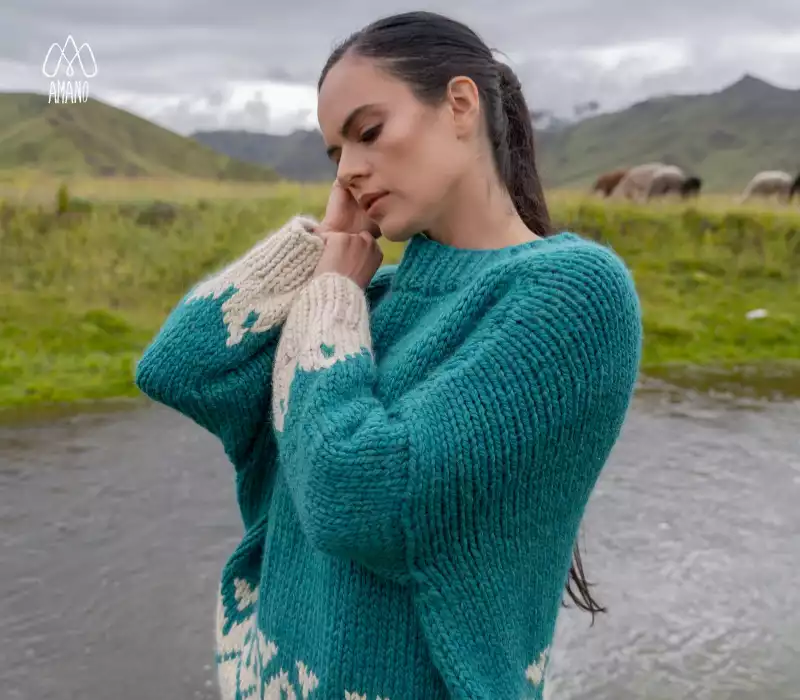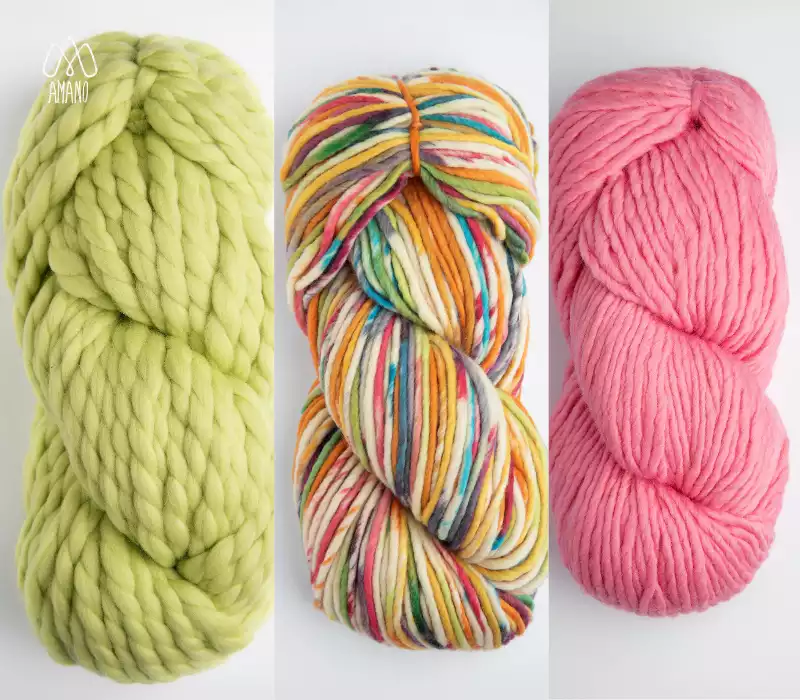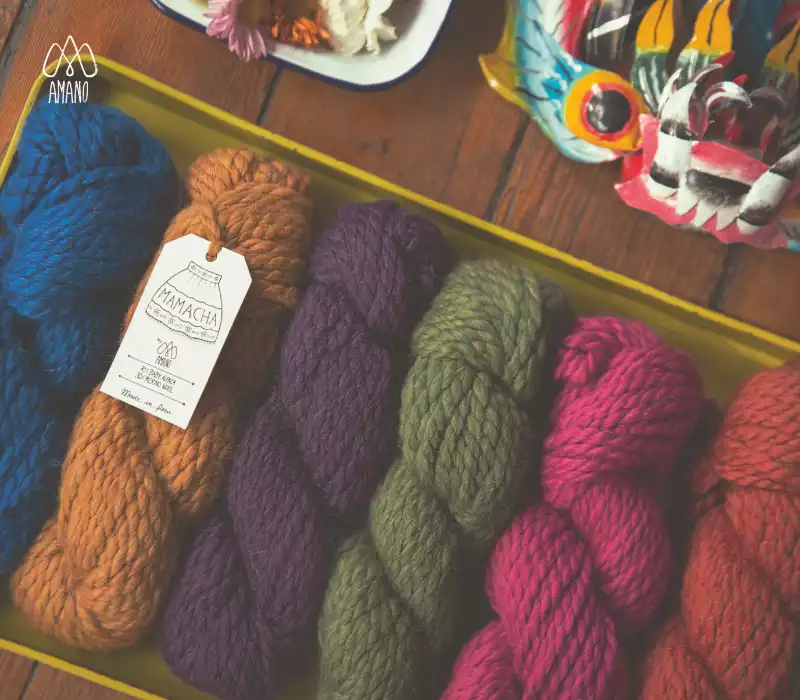Winter doesn’t just change the landscape, it transforms how we dress, how we knit, and how we connect with what we wear. At AMANO Yarns, we believe every skein has the power to warm more than the body: it warms memories, emotions, and purpose.
That’s why, when the cold arrives, we choose fibers that not only protect, but tell stories.
This article is for designers, distributors, and fiber lovers seeking natural yarns that respond to winter with warmth, softness, and durability. From baby alpaca to merino wool, including unique blends like Mamacha and collections like Yana, here’s what makes a yarn truly winter-ready.

1. What Makes a Yarn Ideal for Winter?
Not all yarns insulate the same. Natural fibers like alpaca and merino wool have superior thermal properties thanks to their internal structure: they retain heat without adding weight, allow breathability, and adapt to the body.
Alpaca, for example, has five times the insulating capacity of conventional wool, according to the International Alpaca Association. It’s also hypoallergenic—perfect for garments that touch the skin.
Merino wool regulates body temperature and has natural elasticity, helping garments maintain their shape even after repeated wear.
2. Yana: The Warmth of Peruvian Wool in Three Versions
Yana means “black” in Quechua, but at AMANO Yarns it represents much more: warmth, strength, and origin. Made from 100% fine Peruvian sheep wool, Yana is one of our most versatile winter yarns.
- Yana XL: Ideal for large, quick projects. Its thickness is perfect for chunky sweaters, oversized scarves, and cozy blankets.
- Yana: The classic version, great for structured garments with elegant drape.
- Yana Journeys: A special edition with colors inspired by Andean landscapes—perfect for those who want their garments to tell a visual story.
Yana doesn’t just warm—it connects to the land, the origin, and conscious design.

3. Mamacha: The Perfect Hug Between Alpaca and Merino
Mamacha means “mother” in Quechua, and this yarn honors that name with a warm and protective blend: 70% alpaca and 30% merino wool. The result is a soft, resilient yarn with a texture that invites touch.
Perfect for everyday garments, Mamacha adapts to multiple techniques—from crochet to loom, to knitting. Its composition makes it ideal for cold climates, but also for indoor comfort without excess weight.
Designers working with Mamacha often highlight its ability to hold shape without losing softness, even after several washes.

4. How to Choose the Right Yarn Based on the Garment Type
Yarn choice depends on the final use. For outerwear like coats or ponchos, thick yarns like Yana XL or blends with high alpaca content are recommended. For accessories like hats, gloves, or scarves, Mamacha offers the perfect balance of warmth and flexibility.
For inner garments or those in direct contact with the skin—like sweaters or vests—baby alpaca is unmatched. Its softness and thermal capacity make it a premium fiber for winter.
Color also plays a role: earthy tones, greys, and neutrals convey visual warmth, while vibrant colors add energy to cold days.
5. Winter Design Trends with Natural Yarns
Winter 2025 brings a clear trend: knits with volume, texture, and storytelling. Garments no longer just insulate, they communicate. That’s why natural yarns like those from AMANO Yarns are leading in collections that seek authenticity.
- Visible textures: chunky stitches, cables, braids
- Nature-inspired colors: ochres, moss greens, deep blues
- Modular designs: garments that adapt, transform, or layer
Designers working with our yarns often say each fiber adds personality to the design. Knitting with Mamacha isn’t the same as with Yana Journeys, each has its own voice.
6. Why Choose Natural Over Synthetic Yarns in Winter?
Beyond thermal performance, natural yarns offer ecological and sensory advantages. They don’t generate static, don’t retain odors, and are biodegradable. In a world where sustainable fashion is gaining ground, choosing fibers like alpaca or merino is also an ethical decision.
According to Textile Exchange’s 2024 report, 62% of consumers value fiber traceability and origin when making purchasing decisions.
Conclusion: Knit Warmth, Knit with Purpose
Winter is an invitation to return to the origin. To choose fibers that warm with intention, respect the environment, and elevate design. At AMANO Yarns, every skein and ball is crafted to accompany you on that journey.
If you’re building a collection, seeking inspiration for your brand, or simply want to knit something that lasts, remember: warmth begins with the fiber. And the best winter yarns don’t just insulate, they tell stories.



